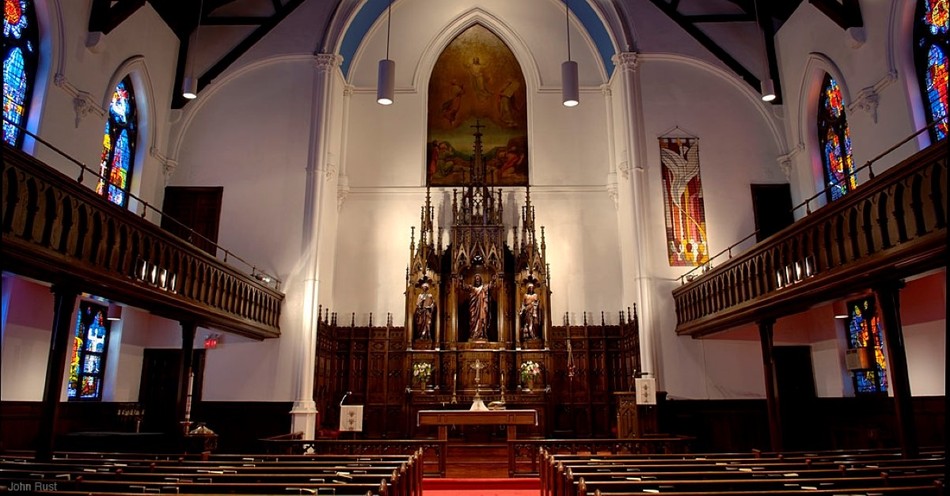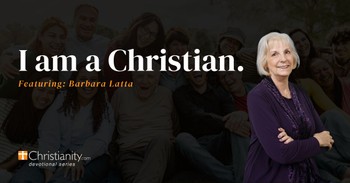The Lutheran Church is primarily based on the teachings and beliefs of the 16th-century German friar, church reformer and theologian, Martin Luther. While there are many distinct bodies of the Lutherans throughout the world, each one to a certain extent follows the theology of Martin Luther and his Protestant Reformation from the Catholic Church.
Lutherans promotes the concept of justification "by grace alone through faith alone on the basis of Scripture alone", the belief that the Bible is the ultimate authority on all issues of faith. Today, it is estimated there are over 70 million members of different Lutheran denominations all around the world. Check out our list of 15 facts below!
Cover Photo Credit: Header Image for this article is from the Immanuel Lutheran Church
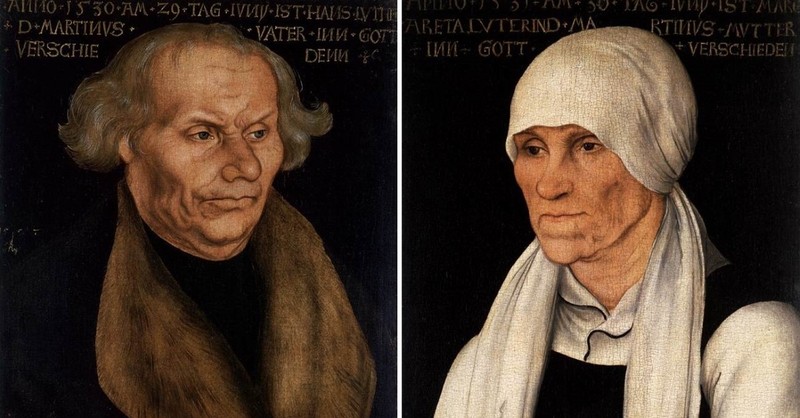
1. Martin Luther's family actually benefited economically from the Black Death.
At the start of the 16th century, Europe had seen large changes in the arrangement of social classes in the last hundred years. The severe drop in population from the Black Death created new economic opportunities and mobility for the lower classes of society. New technologies were invented to offset labor shortages and increase productivity, which then established new classes of society to facilitate manufacture and trade.
Hans Luther, the father of Martin Luther, was a benefactor of this new middle class as he earned a living leasing and operating copper mines and smelters. The Luther family made a sufficient income to provide a university education for his son, helping Martin to become a renowned theologian, contributing significant reformations, leading to the creation of Lutheranism.
Photo Credit: public domain portraits by Lucas Cranach the Elder via Wikimedia Commons.

2. Gutenberg's Printing Press helped enable the Protestant Reformation.
It is arguable that the Protestant Reformations would not have happened, or at least nearly not as effectively, without the invention of the printing press by Johannes Gutenberg in 1439. For most of the Middle Ages, books were hand-written by scribes in Latin, a language which only the most educated people could understand.
The printing press is considered one of the most important innovations of the Middle Ages because, as nothing before, it enabled the vast distribution of information. The spread of books, enabling a growth in higher education, had a clear impact on the Lutheran reformers. Now that more of the general population could read and know the teachings of the Bible, it was the reformers' affirmation, led by Martin Luther, that Christians should live in accordance with scripture and disregard non-biblical Catholic traditions.
Photo Credit: Jane023 via Wikimedia Commons

3. Martin Luther sparked the Protestant Reformation with his "Ninety-five Theses."
On October 31st, 1517, Luther wrote to the Archbishop of Mainz and Magdeburg, protesting the sale of indulgences by the Catholic church. He enclosed in his letter a copy of his "Disputation of Martin Luther on the Power and Efficacy of Indulgences," which came to be known as the Ninety-five Theses.
Asserted by Philipp Melanchthon in 1546, Luther also posted his Ninety-five Theses to the door of the Castle Church in Wittenberg that same day, as church doors acting as the bulletin boards of his era, an act now viewed as sparking the Protestant Reformation and celebrated each year on October 31st as Reformation Day.
Photo Credit: © Getty Images/MichaelMajor

4. Martin Luther strongly believed in "justification by faith alone."
As Luther obsessively studied portions of the Bible, he came to believe that the church was significantly corrupt with the sale of indulgences and had lost sight of the essential truths of Christianity. The most important of which was the doctrine of "justification by faith" alone through God's grace. Luther began to teach that salvation is a blessing of God's grace, attainable solely through faith in Jesus as the Messiah. "This one and firm rock, which we call the doctrine of justification," he wrote, "is the chief article of the whole Christian doctrine, which comprehends the understanding of all godliness."
Photo Credit: ©Getty Images/Photos.com
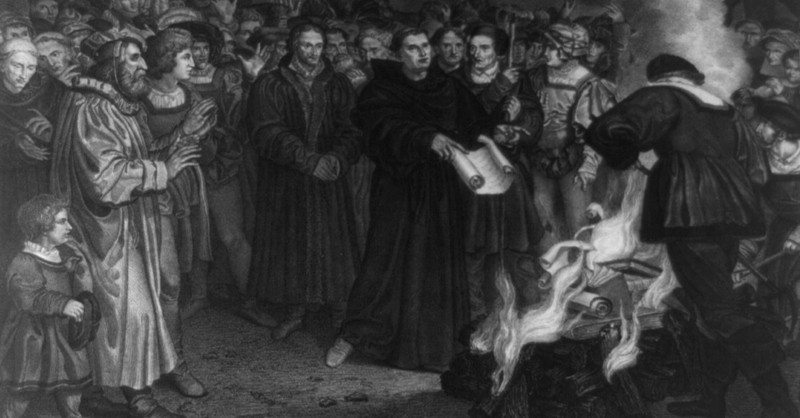
5. Pope Leo X threatened to ex-communicate Martin Luther.
On June 15th, 1520, the Pope warned Luther with a public decree titled Exsurge Domine that he risked excommunication unless he renounced 41 statements from his writings, including the Ninety-five Theses, within 60 days.
Later that year, Johann Eck posted the decree publicly in Meissen and other towns. Luther, who had sent the Pope a copy of On the Freedom of a Christian in October, publicly set fire to the Pope's decree at Wittenberg on December 10th, 1520, an act he defended in Why the Pope and his Recent Book are Burned and Assertions Concerning All Articles.
Consequently, Luther was excommunicated by Pope Leo X on January 3rd, 1521, in the decree called Decet Romanum Pontificem.
Photo Credit: Public domain print via Wikimedia Commons.
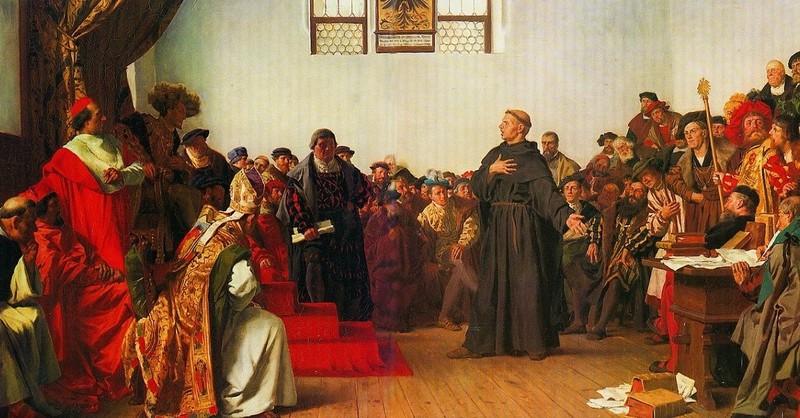
6. Roman Emperor Charles V declared Luther a notorious heretic.
The Diet of Worms was an imperial assembly of the Holy Roman Empire held in Worms, then an Imperial Free City of the Empire. A diet was a formal contemplative assembly of the Roman Empire. This diet is most known for the Edict of Worms, which condemned Martin Luther and his writings contradicting the Catholic church.
The Edict of Worms was a decree issued on May 25th, 1521 by Emperor Charles V, declaring:
For this reason, we forbid anyone from this time forward to dare, either by words or by deeds, to receive, defend, sustain, or favor the said Martin Luther. On the contrary, we want him to be apprehended and punished as a notorious heretic, as he deserves, to be brought personally before us, or to be securely guarded until those who have captured him inform us, whereupon we will order the appropriate manner of proceeding against the said, Luther. Those who will help in his capture will be rewarded generously for their good work.
The Edict of Worms declared Luther an outlaw, banned his literature, and required his arrest: "We want him to be apprehended and punished as a notorious heretic". It also declared it a crime for anyone in Germany to give Luther food or shelter and allowed anyone to kill Luther without legal ramifications.
Photo Credit: Anton von Wernier painting via Wikimedia Commons.
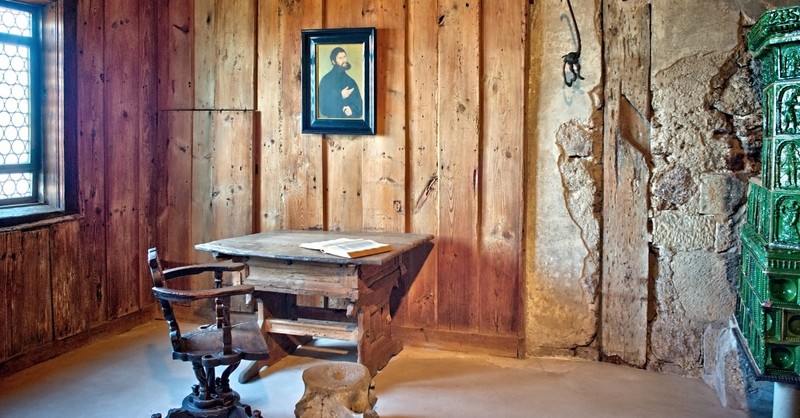
7. Martin Luther went into exile as a political enemy of the Roman Empire.
Luther's escape into exile during his return trip was organized with the help of Frederick III, Elector of Saxony. Frederick III had him secretly intercepted on his way home by masked horsemen and taken to the security of the Wartburg Castle at Eisenach, where Luther grew a beard and lived incognito for nearly eleven months, pretending to be a knight called Junker Jörg.
During his time at Wartburg, Luther translated the New Testament from Greek into German and poured out doctrinal and controversial writings, including a "Refutation of the argument of Latomus," in which he clarified the doctrine of justification to Jacobus Latomus, a philosopher from Louvain, and a renewed attack on Archbishop Albrecht of Mainz, whom he disgraced into ceasing the sale of indulgences as a bishop.
Photo Credit: Thomas Vogt/Flickr
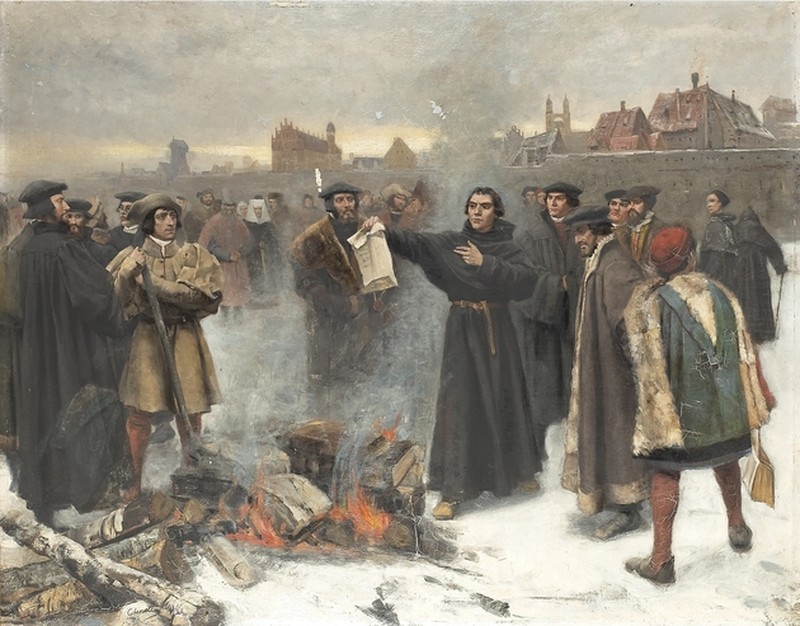
8. The term "Protestant" was originally used politically.
In 1526, at the First Diet of Speyer, it was determined that, until a General Council could meet and decide the theological issues raised by Martin Luther, the Edict of Worms would not be enforced and each Prince could decide if Lutheran teachings and worship would be allowed in his state.
In 1529, at the Second Diet of Speyer, the decision the previous Diet of Speyer was reversed — despite the strong protests of the Lutheran princes, free cities, and Zwinglians. These states quickly became known as Protestants. At first, this term Protestant was used politically for people that resisted the Edict of Worms. Although, over time this term came to be used for the religious movements that opposed the Roman Catholic tradition in the 16th century.
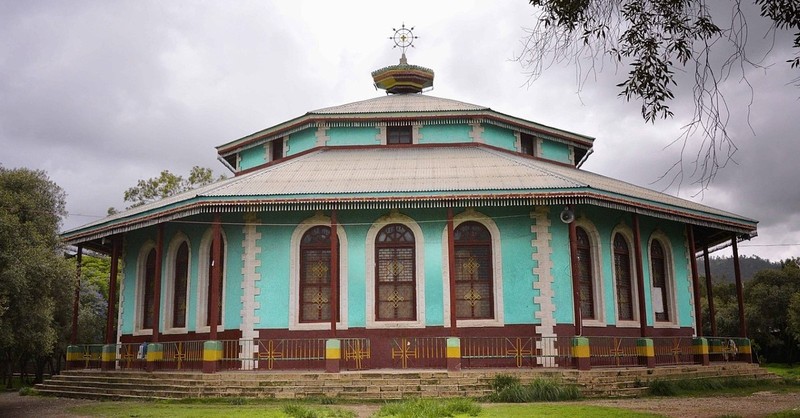
9. Martin Luther found an important ally in the Ethiopian Orthodox Church.
In 1534, Michael the Deacon of the Ethiopian Orthodox Church traveled to Wittenberg to meet with Martin Luther, both of whom agreed that the Lutheran Church and the Ethiopian Orthodox Church were in agreement with one another in regards to many doctrinal beliefs and practices.
In their discussion, Michael the Deacon also affirmed Luther's Articles of the Christian Faith as a "good creed". Martin Luther saw that the Ethiopian Orthodox Church practiced elements of faith including "communion in both kind, vernacular Scriptures, and married clergy" and these practices became a tradition in the Lutheran Churches. For Lutherans, "the Ethiopian Church conferred legitimacy on Luther’s emerging Protestant vision of a church outside the authority of the Roman Catholic papacy" as it was "an ancient church with direct ties to the apostles."
Photo Credit: Rod Waddington via Wikimedia Commons.
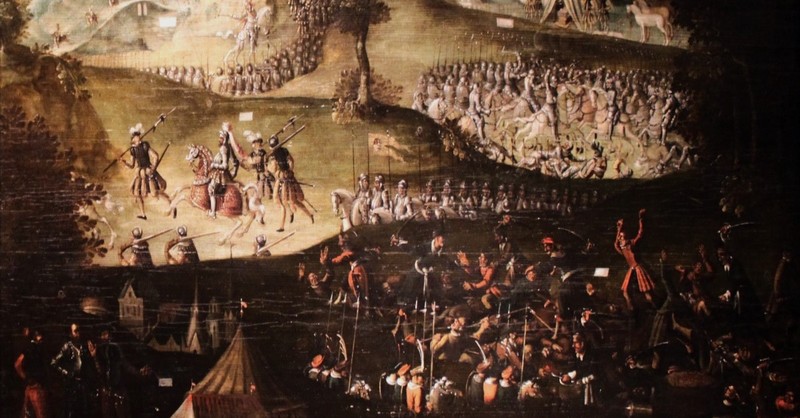
10. After Martin Luther's death, a war broke out between Lutherans and the Holy Roman Empire.
Many of the German princes, and later, kings and princes of other countries, signed the Augsburg Confession to define "Lutheran" territories. These princes would form an alliance to create the Schmalkaldic League in 1531. Martin Luther used his political influence to avoid war but acknowledged the authority of rulers to defend their lands in the case of an invasion.
Martin Luther died in 1546 and the following year the Schmalkaldic War started out as a battle between two Lutheran rulers. Soon the Holy Roman Imperial forces joined the battle and conquered the members of the Schmalkaldic League, oppressing and exiling many Lutherans as they enforced the terms of the Augsburg Interim until religious freedom was secured for Lutherans through the Peace of Passau of 1552 and the Peace of Augsburg of 1555.
Photo Credit: tapestry of the Schmalkaldic War via Wikimedia Commons.
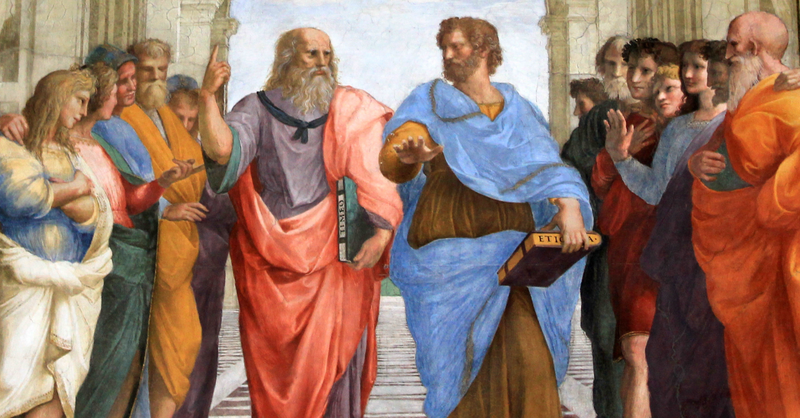
11. Lutheran scholasticism was partially inspired by the philosopher Aristotle.
Lutheran scholasticism was a theological method that steadily developed during the time of Lutheran Orthodoxy. Theologians used the neo-Aristotelian form of presenting their ideas and beliefs in their writings and lectures. They defined the Lutheran faith and defended it against attacking criticisms.
Scholasticism in Lutheranism aimed at a comprehensive examination of theology, augmenting revelation with the conclusions of reason. The Greek philosopher Aristotle developed the rules according to which it proceeded, and after some time, he became the authority for both the source and process of theology.
The philosophical school of Neo-Aristotelianism originated among Roman Catholics, however, it expanded to Germany by the late 16th century, resulting in a uniquely Protestant methodology of metaphysics associated with humanism. This scholastic idea of metaphysics held that abstract concepts could better define the world in clear, distinct terms. This influenced the later development of the scientific method.
Photo Credit: Raffaello Sanzio via Wikimedia Commons.
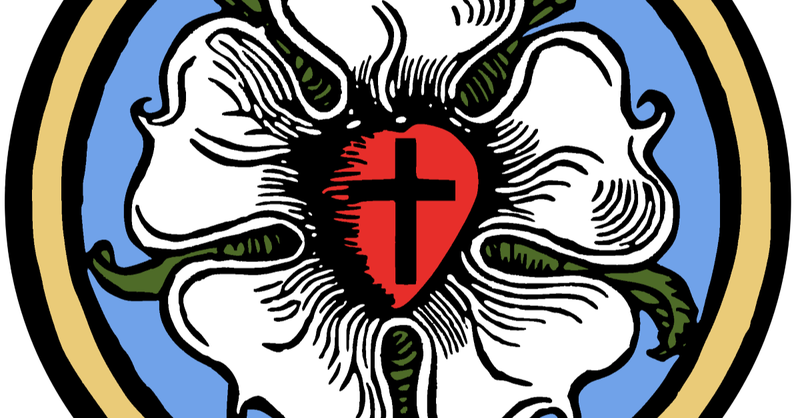
12. The Three Solas of Lutheranism.
The main doctrine, or primary principle, of Lutheranism, is the doctrine of justification. Lutherans believe that humans are saved from their sins by God's grace alone (Sola Gratia), through faith alone (Sola Fide), on the basis of Scripture alone (Sola Scriptura).
Orthodox Lutheran theology holds that God made the world, including humanity, perfect, holy and sinless. However, Adam and Eve chose to disobey God, trusting in their own strength, knowledge, and wisdom. Consequently, people are saddled with original sin, born sinful and unable to avoid committing sinful acts. For Lutherans, original sin is the "chief sin, a root, and fountainhead of all actual sins."
Photo Credit: Bickra01 via Wikimedia Commons
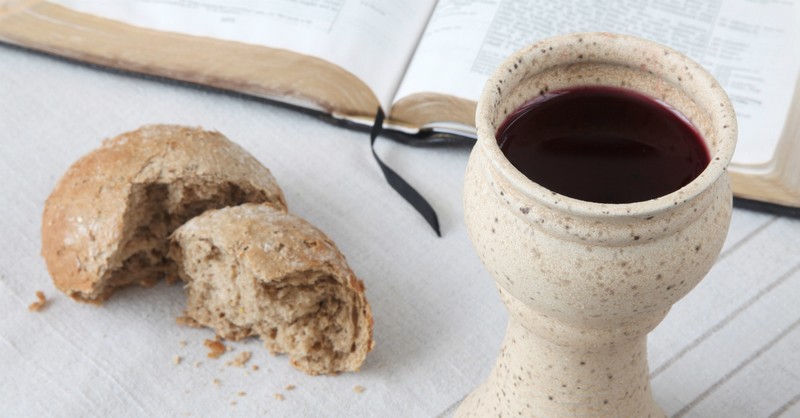
13. The Sacraments of Lutheranism
The Lutheran sacraments are "sacred acts of the divine institution". These sacraments teach that God earnestly offers to all who receive the blessings of forgiveness of sins and eternal salvation.
Lutheran Sacraments
- Baptism - The Sacrament of Holy Baptism is the ceremony by which one is initiated into the Christian faith. Lutherans teach that as a result of baptism, you receive God's promise of salvation. At the same time, to receive the faith you need to be open to God's grace. Lutherans baptize by sprinkling or pouring water on the head of the person (or infant) as the Trinitarian formula is spoken.
- Eucharist - The Sacrament of the Eucharist, also called Holy Communion, is where recipients eat and drink the true Body and Blood of Christ Himself, in the forms of consecrated bread and wine. This Eucharistic theology is known as the Communion of Saints.
Photo Credit: ©GettyImages/IngridHS

14. There is a strong Lutheran fellowship in India.
Lutheranism came to India beginning with the work of Bartholomäus Ziegenbalg, where a community totaling several thousand developed, complete with their own translation of the Bible, catechism, their own hymnal, and system of Lutheran schools. In the 1840s, this church experienced a revival through the work of the Leipzig Mission, including Karl Graul.
After German missionaries were expelled in 1914, Lutherans in India became entirely autonomous, yet preserved their Lutheran character. In recent years India has relaxed its anti-religious conversion laws, allowing a resurgence in missionary work.
Details about the Lutheran church's current work in India can be found in the Evangelical Lutheran Synod website.
Photo Credit: public domain (1896) photo of Lutheran Mission School in Sirkazhi, India, via Wikimedia Commons.

15. Lutheran membership is more than 72 million people worldwide.
Today, millions belong to Lutheran churches, which are present on all populated continents. The Lutheran World Federation estimates the total membership of its churches at approximately 72.3 million. This figure undercounts Lutherans worldwide as not all Lutheran churches belong to this organization.
In recent years, Lutheranism saw a slight increase in its fellowship, which continues to the present. Lutheran churches in North America, Europe, Latin America and the Caribbean regions are experiencing decreases and no growth in membership, while those in Africa and Asia continue to grow. Lutheranism is the largest religious group in Denmark, the Faroe Islands, Greenland, Iceland, Norway, Sweden, Finland, Latvia, and Namibia.
Lutheranism is also a state religion in Iceland, Norway, Denmark, Greenland, and the Faroe Islands. Finland has its Lutheran church established as a national church. Similarly, Sweden also has its national church, which was a state church until 2000.
Photo Credit: © Getty Images/Tetiana Musiyaka
This article is part of our Denomination Series listing historical facts and theological information about different factions within and from the Christian religion. We provide these articles to help you understand the distinctions between denominations including origin, leadership, doctrine, and beliefs. Explore the various characteristics of different denominations from our list below!
Catholic Church: History, Tradition & Beliefs
Jehovah's Witnesses & Their Beliefs
Mormons: The Church of Latter Day Saints & Their Beliefs
Baptist Church: History & Beliefs
Presbyterians: History & Beliefs
Mennonites & Their Beliefs
United Methodist Church: History & Beliefs
Seventh-Day Adventists & Their Beliefs
The Pentecostal Church: History & Beliefs
Lutheran History & Beliefs
